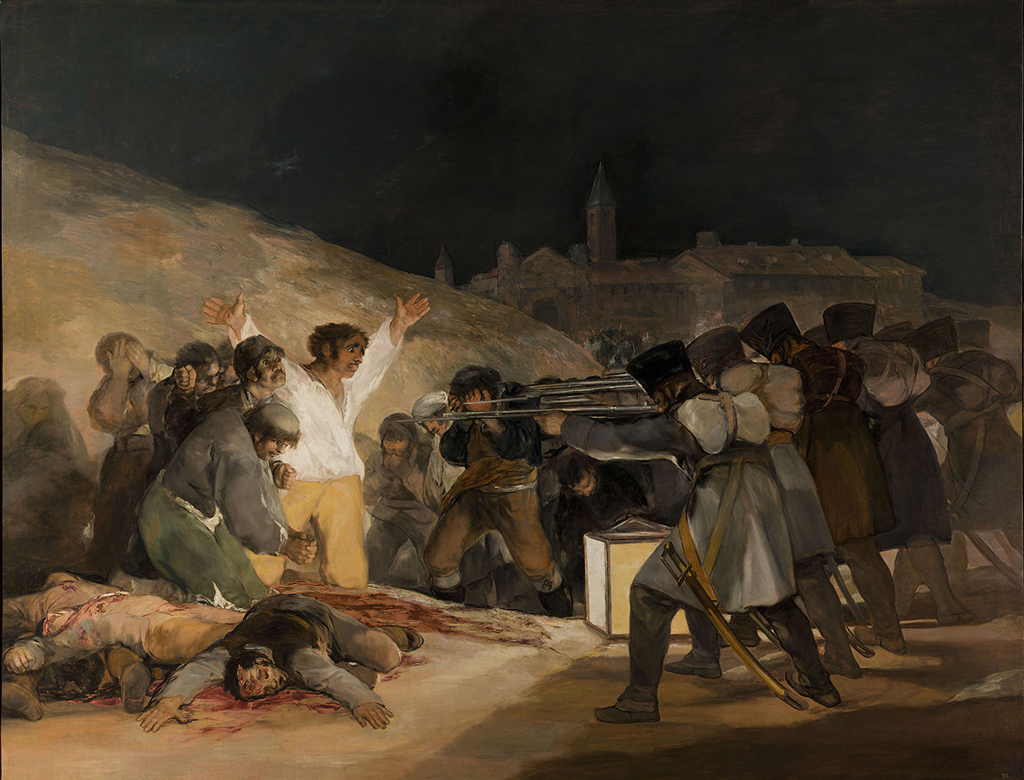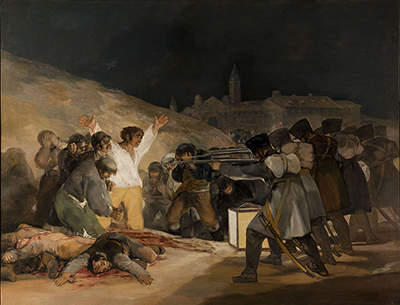Goya's Third of May was painted in 1814, some six years after the historic moment which was captured forever in the work of Goya. The Museo del Prado, Madrid now displays the classic original painting though many like to buy reproductions of it for their own homes as framed art prints. If you would like to do the same, please use the links below that accompany each picture of the Third of May painting.
Francisco de Goya is seen as an artist who bridged the old and new with his skillful romanticist paintings. The career highlights for Goya included Third of May, Second of May, Disasters of War, Sleep of Reason, Nude and Clothed Maja, Witches Sabbath and Dog. These and other paintings from the Spanish artist are included throughout this website along with more information on his life and career.
The Third of May is an honest and accurate depiction of the great horrors of war, a topic which many artists over the centuries have be drawn to, with Picasso's Guernica another memorable contribution. In previous art history all war based scenes had been depicting honour and glory rather than the negative realities that so many people have experienced all over the world.
3rd of May has been classified by many art academics as a revolutionary piece of art work in many different ways, such as both the content of the painting itself but also the way in which the painter artistically creates it. The paintings entitled the 2nd and 3rd of May cover crucial moments within the Spanish uprising against the occupying French of around that same time.
Francesco de Goya was a passionate Spaniard and once the French invaders had been sent away he immediately went about depicting crucial moments from the Spanish uprising within his art. There was a huge passion for the artist to represent this time within Spanish art and so it cannot be surprising that these were amongst his finest works from a long and distinguished career.
Interestingly, Goya was unsuccessful with his application to join the Royal Academy of Fine Art in 1763 and 1766 when a young Francesco still had a lot to learn. His true success was to arrive some years later after he had further developed as an artist and fully establish his reputation. Despite failing to get into the Royal Academy of Fine Art at that time, Goya was not detered and continued to study the skills that he required to find his full potential.





